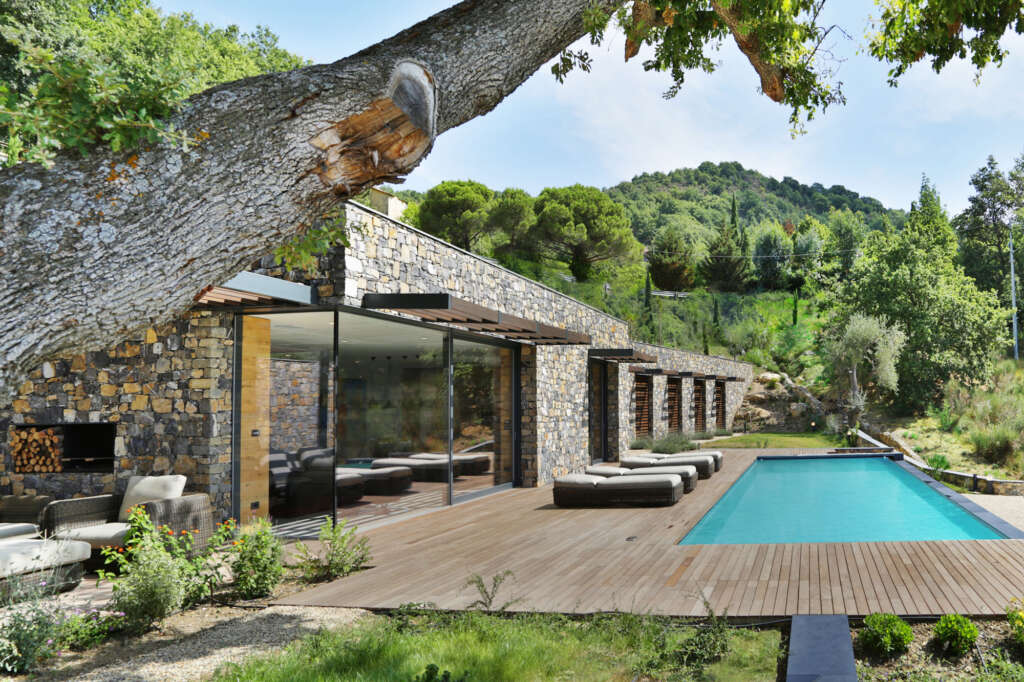
The following description is courtesy of Giordano Hadamik Architects GHA.
Liguria, Italy – Villa N is a single-family residential building of ca.210mq situated in the hills overlooking the Gulf of Imperia. The villa plays with the cultural landscape of the Ligurian terraces becoming part of it. The natural stone facades have large openings facing the valley and the sea.
The villa is composed of two half subterranean volumes arranged on a single floor, following the morphology of the ground and creating a noble central entrance which leads one side to the large open space living with dining area and kitchen and to the other are 5 bedrooms which all benefit from a private outside space and views over the sea. The sun deck situated in front of the living room opens up to the 4x14m infinity swimming pool overlooking the magnificent valley. The corridor and service areas are all naturally illuminated by large openable skylights. The Villa incorporates a pantry, laundry, storage rooms, technical service rooms, and external storage in the garage with 2 parking spaces
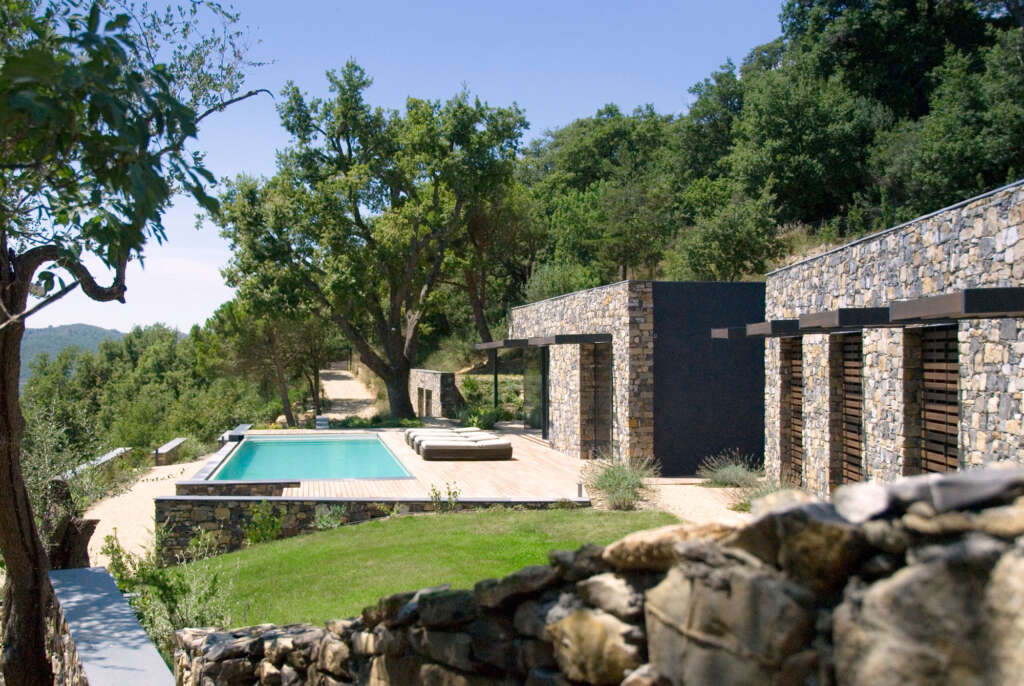
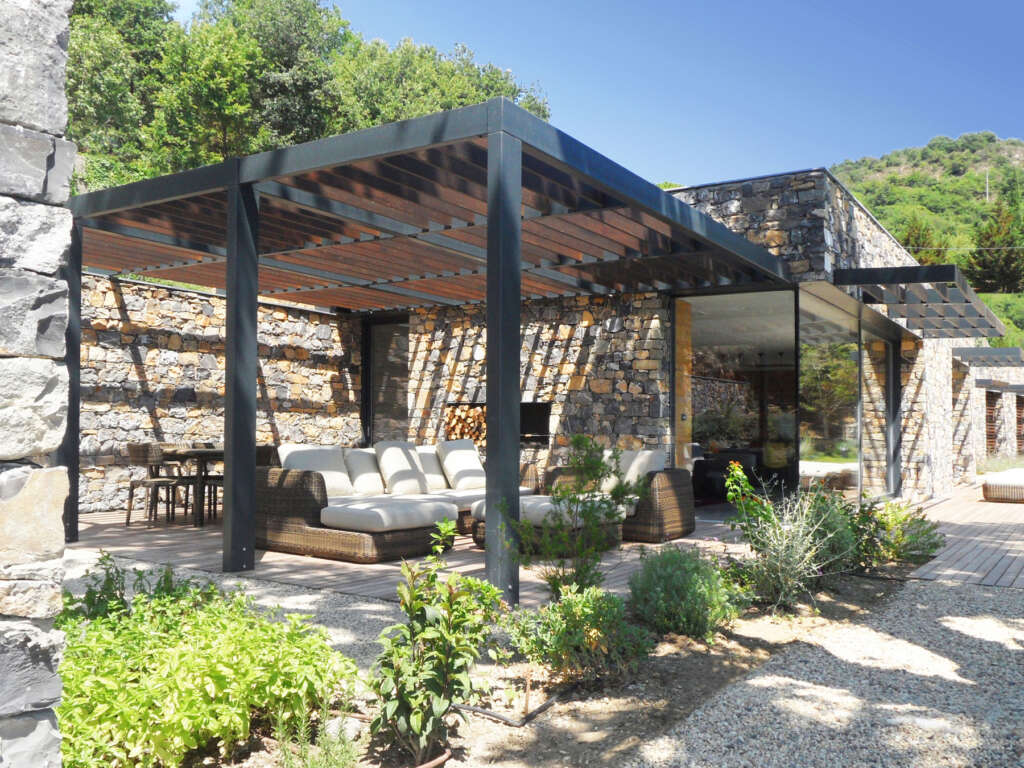
Significant containment walls create a continuity between the building, the interior and the external surrounding. The garden patio and the sun shading canapies create an mediating filter between inside and outside. The green roof contributes to the harmonic insertion into the landscape and minimizes the visual impact of the building. To increase the natural environment, the house is surrounded with mediterranean essences. The permeability of the terrain is maximized by using a combination of gravel and timber surfaces.
The highly isolated subterranean shelf and the efficient control and use of solar and renewable energy, reduces significantly the energy consumption of the building while obtaining a superior house comfort, bringing the building up to Passivhaus standards.
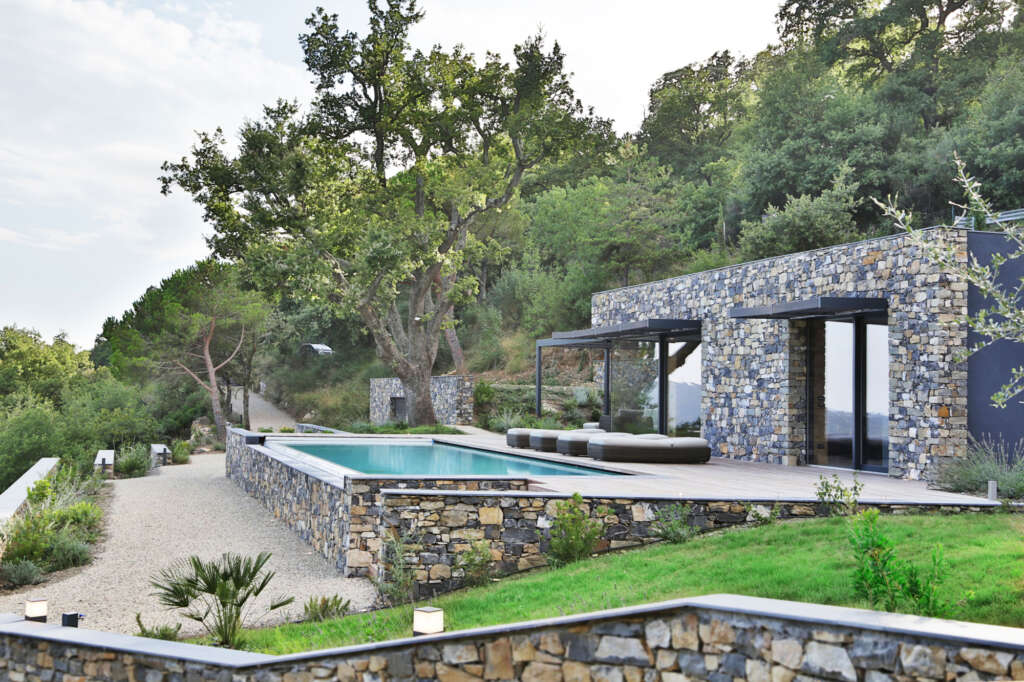
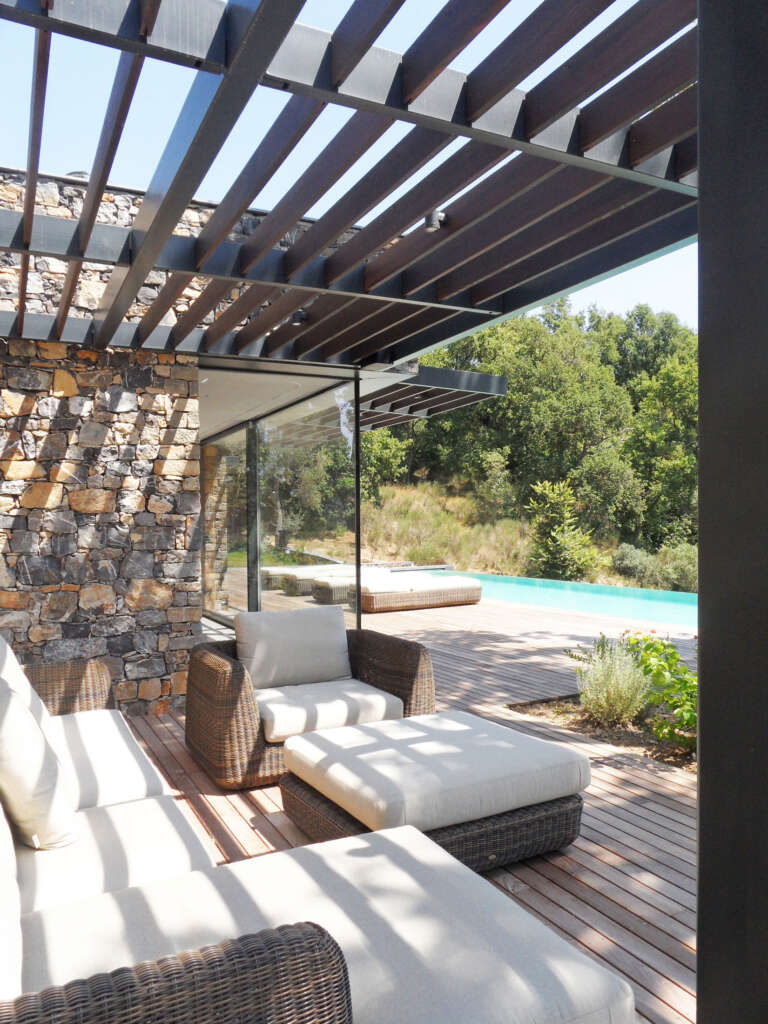
Openings
Great care was placed in the design of the openings to reduce visual impact and to optimize the thermal insulation of the building.
The windows play a key role in the project maximizing views and light. Large openings from floor to ceiling are designed to create an effect of continuity between inside and outside.
All frames are integrated in the structure to visually disappear, both from the outside through the natural stone cladding and the timber flooring and from the inside through the suspended ceilings and the incorporated timber furniture or plasterboard cladding to the walls.
In the living room, the large corner window of six meters which continues for another one and a half meters becomes one of the most significant points of the house. The hidden frame enhances the effect of lightness and transparency framing views of the pool, the big oak tree, the patio and into the valley and the sea.
To minimize any possible thermal bridge, the thresholds were laid on insulation with high mechanical strength (Cellular glass boards),while the top and the side of the fixed glass frame are fully framed by insulation.
The sliding glass window which leads onto the patio which functions as a filter zone allows a visual continuity of the internal exposed concrete wall to the external stone wall.
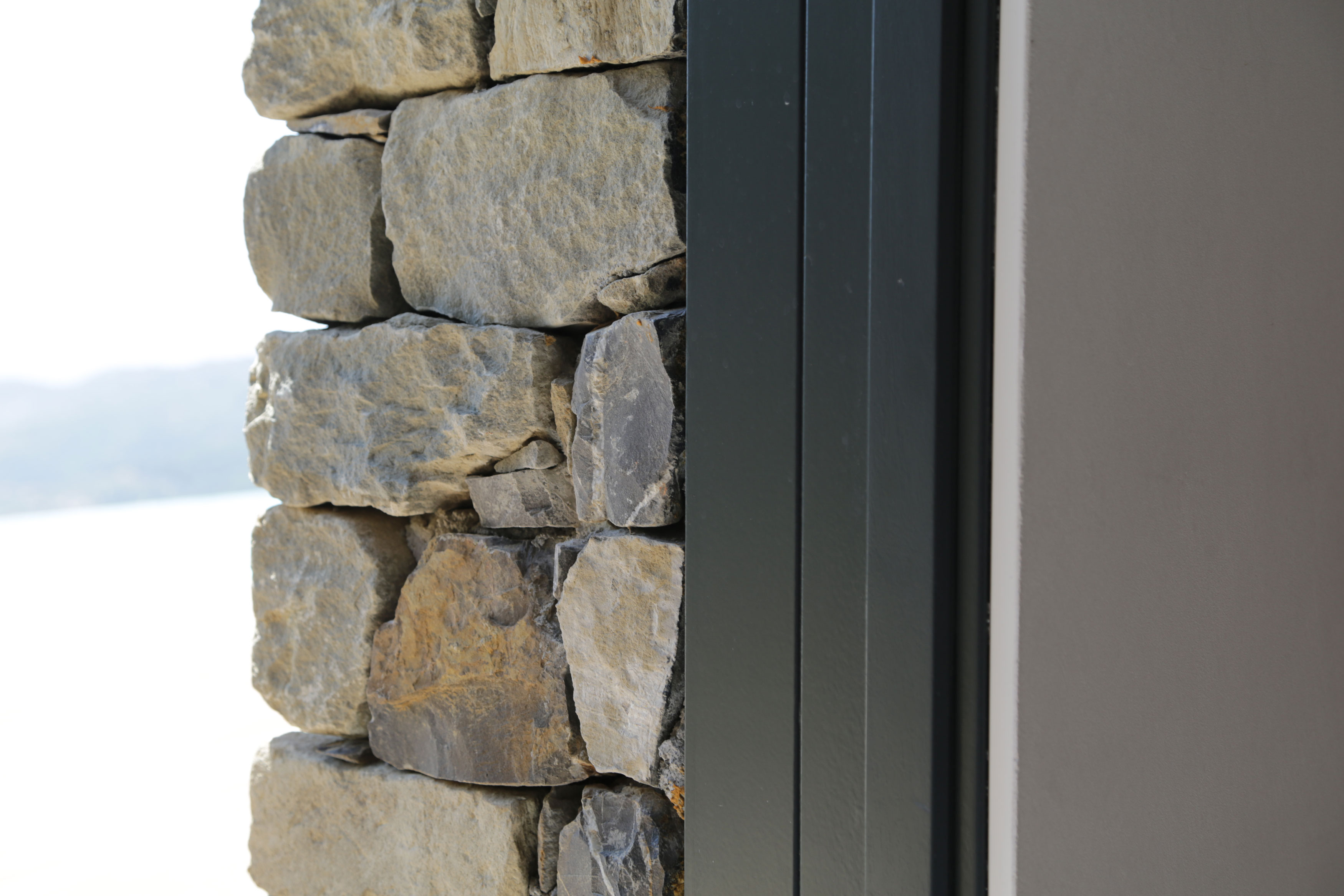
Principles of sustainability
- Building is highly insulated to eliminate thermal bridges
- Ground as thermal mass to decrease heat losses
- Green roof to decrease the thermal disparity
- Maximised permeability of terrain
- Windows and skylights to maximize natural light
- Windows with high thermal performance
- Use of renewable energy sources with solar panels and photovoltaic
- Heat produced by the solar panels is used for underfloor heating in combination with integrated heat pump for high efficiency
- Mechanical ventilation to maintain an optimum indoor air quality by reducing energy consumption
- The plant does not require the use of fossil fuels, but only electricity
- Re-use of natural stone obtained from the excavation for the facade cladding
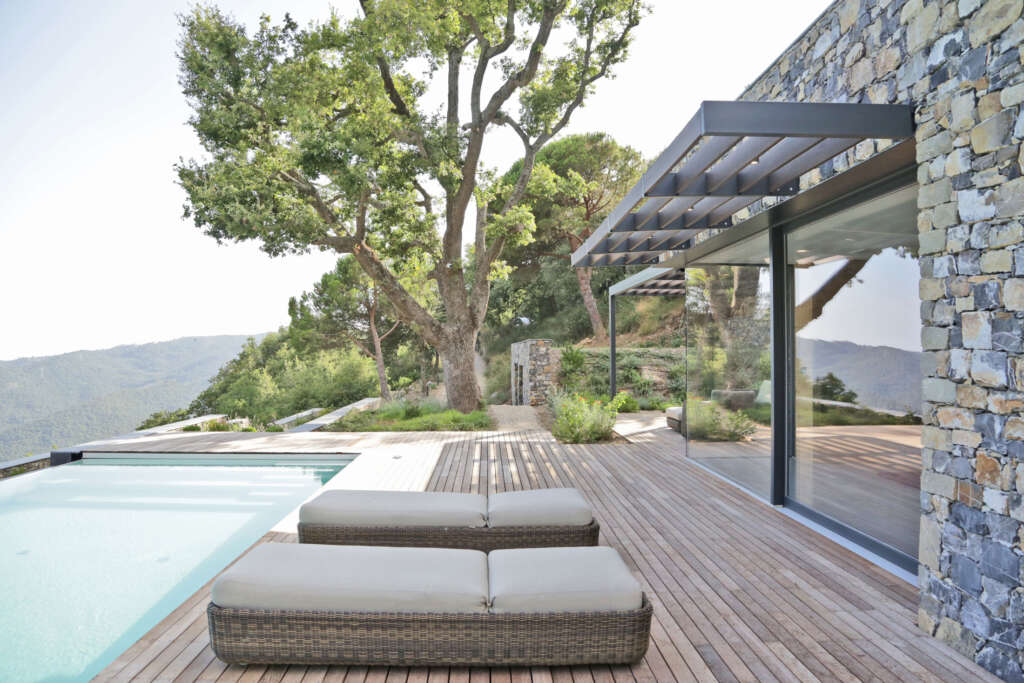
Interior Design
The interior is defined by a simple minimal design with the use of high quality pure materials and details, as timber and stone, with industrial concrete floors and gypsum plaster. The build in furniture in natural oak is a bespoke design in line with all other furniture elements, as tables and stools, designed by GHA.
Modulized systems are used to maximise spaces and efficiency. All doors in massive timber are ceiling high, creating a slot and adding to the flowing room arrangement which allows for functional and visual connection of the private and semi private rooms.
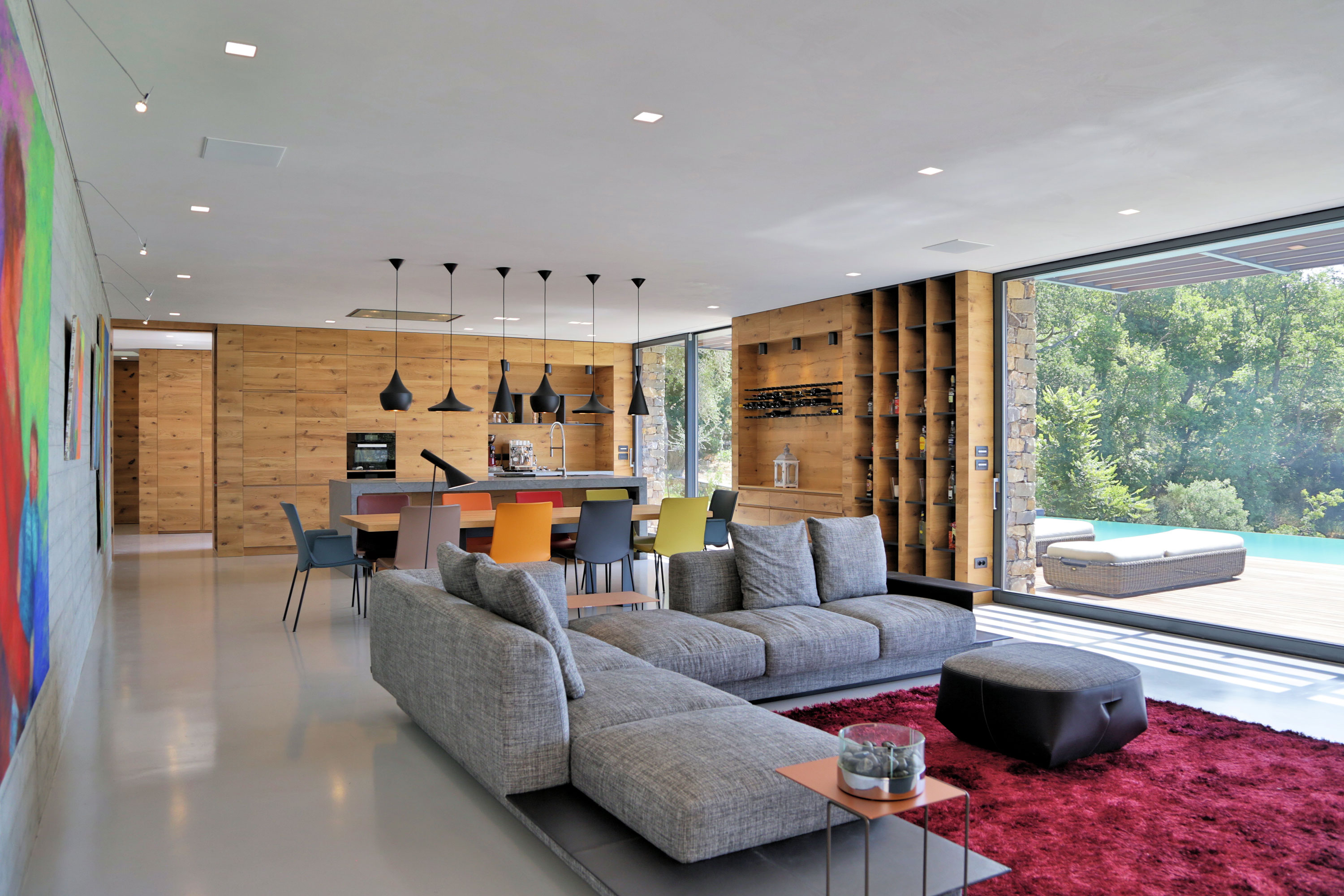
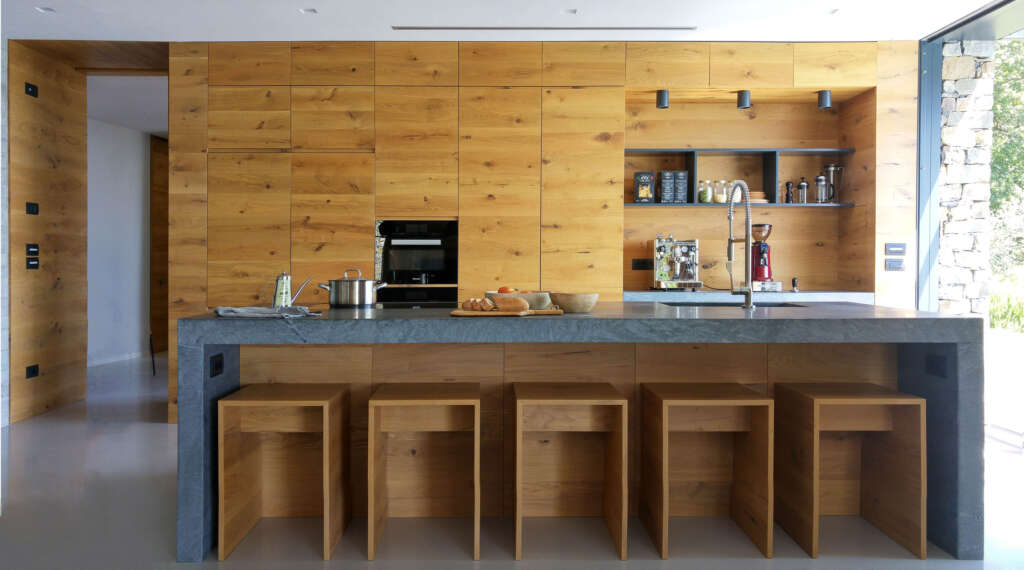
In the large living room the furniture, composed by the kitchen, the bar and library and the fireplace and TV, becomes a pure volume as a floating stand alone item thanks to the adjacent windows, which frames are completely imbedded in the timber. In contrast to the warmth of the oak, stands the exposed concrete wall to the back of the living room showing the imprint of the timber cast boards functioning as the feature art wall of the room.
The design of the bedrooms show a very efficient layout with build in wardrobes and multifunctional use. Two single timber futon beds are positioned along a continuos oak back board floating over a low bedside rack allowing for different fit out arrangements. The room can function as a double bed room, a twin room or a study or play room. The continuos high book shelf integrates lighting which position can be adjusted to the need. Bespoke bedside table are part of each room. The bathrooms are clad with natural stone and fit out with oak furniture and corian sanitary ware. The rooms are illuminated by the above skylights creating a sensational atmosphere. In the evening the stone walls of the walk-in rain shower and the whirlpool bath are illuminated by integrated wall washer lighting from the ceiling.
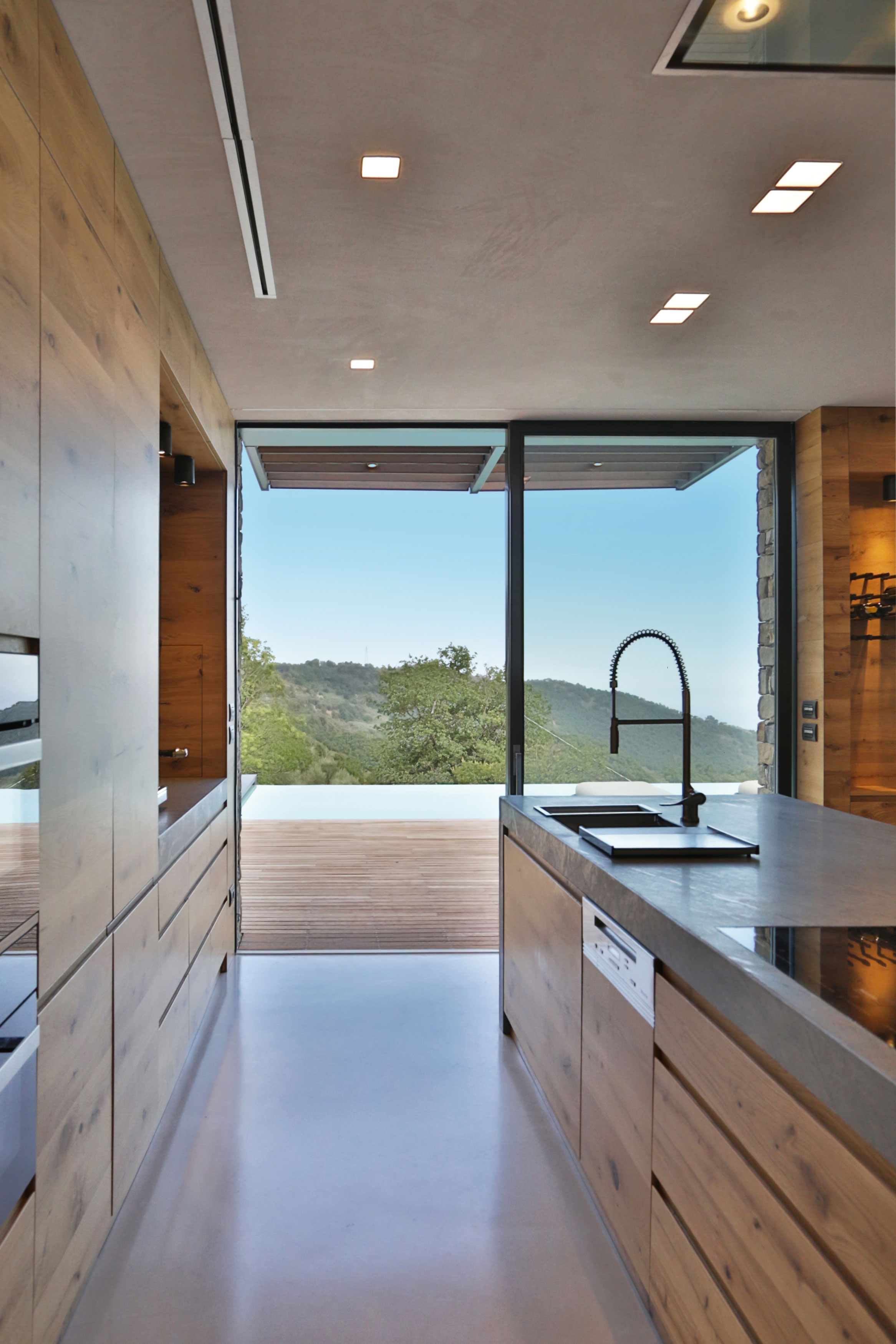
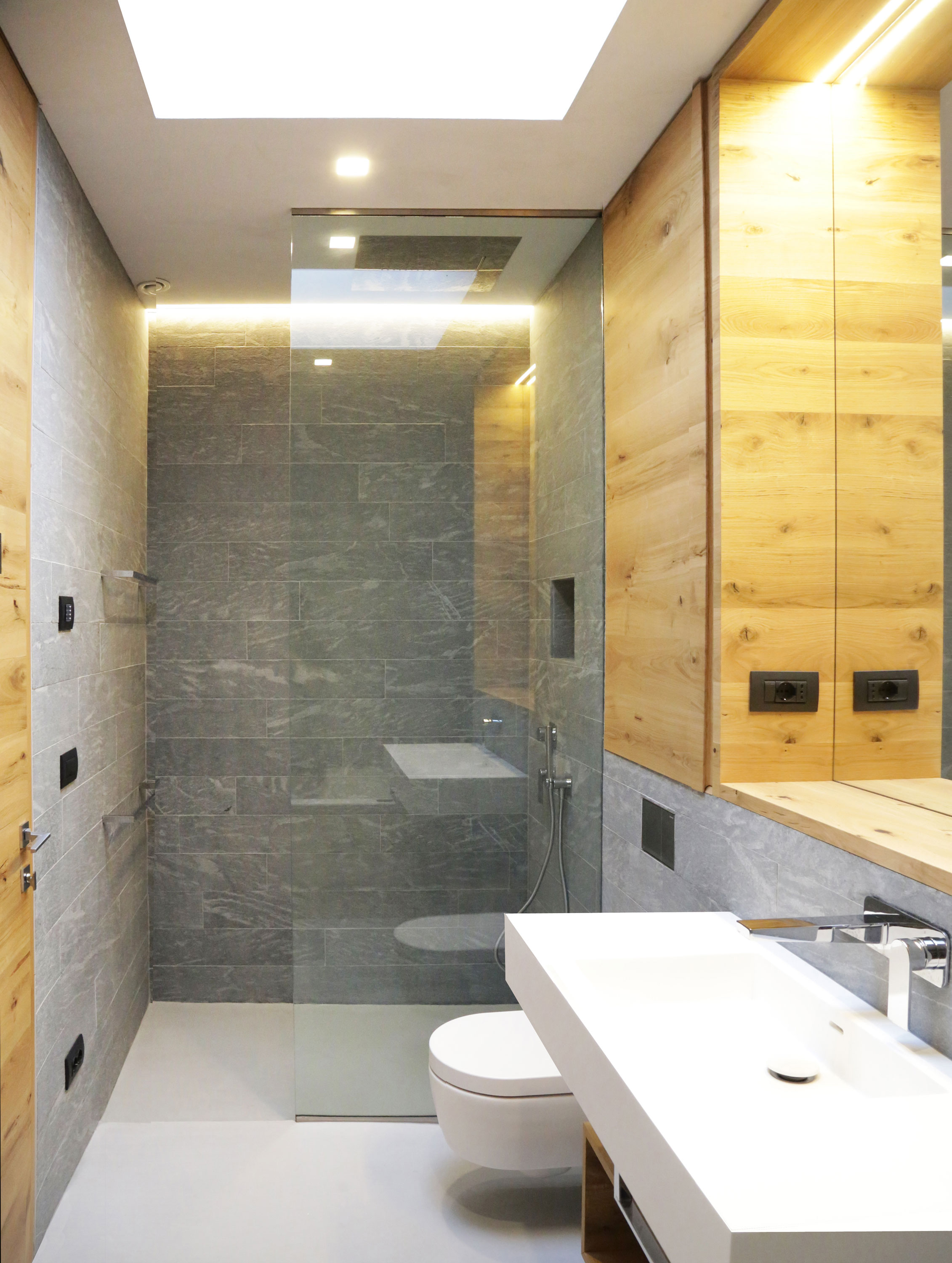
Images courtesy of Giordano Hadamik Architects GHA.
Project Details
Project team
- Architect: Giordano Hadamik Architects GHA
- Arch. Daniele Giordano
- Dipl. Ing Nadine Hadamik
- Planning, Health & Safety: Arch. Roberto Ferraro
- Structure: Ing. Daniele D’IGNOTI
- Mechanical & Electrical Engineer: Moroni Penna Ingegneri
- Geologist: Dott. Giorgio Ligorini
- Survey: Geom. Pastorelli Antonio
Key Facts
- Completion: April 2015
- Building Area:
- House: 200 sqm
- Garage: 45 sqm
- Pool: 50 sqm
- Energy Consumption: 14 KWh/m2 year
Key Dates
- Februray 2012: Planning Application submitted
- January 2013: Conditional Approval granted
- October 2013: Beginning of construction
- April 2015: Practical Completion




